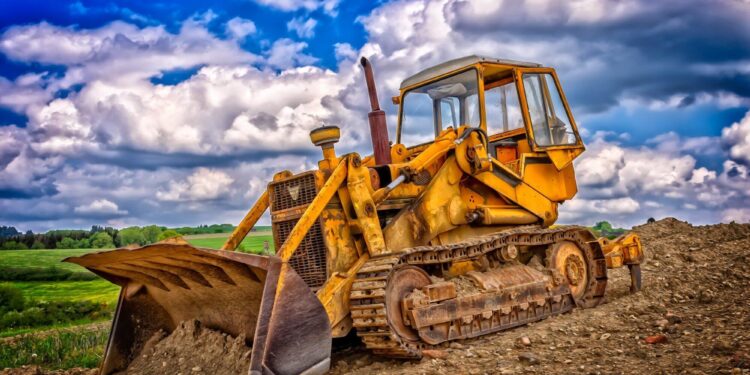Understanding the Role of Land Clearing in Infrastructure Projects

Land clearing is one of the first and most important steps in building roads, bridges, and other infrastructures. It prepares the land by removing trees, rocks, and debris so that construction can begin safely and smoothly.
Clearing the land process makes the area safe for workers and machines. Without land clearing, infrastructure projects would be delayed or unsafe.
In this blog post, we’ll explore how land clearing supports infrastructure development. We’ll look at its purpose, methods, and impact on the environment and safety. You’ll also learn how it follows rules and uses smart tools and strategies.

Table of Contents
- 1 The Importance of Land Clearing
- 2 How It Supports Land Preparation for Construction
- 3 Vegetation Removal Methods Explained
- 4 The Equipment Used in Land Clearing
- 5 Keeping Projects Safe During and After Clearing
- 6 Improving Access to Remote Sites
- 7 Meeting Regulatory Requirements for Clearing Land
- 8 Considering the Environmental Impact Assessment
- 9 Using Sustainable Land Management Practices
- 10 Trusted Help for Your Land Clearing Needs
- 11 Land Clearing: A Critical Step in Every Infrastructure Plan
The Importance of Land Clearing
Land clearing is key to the safety of construction sites. It also helps protect people, tools, and machines. Without it, projects would be slower, more dangerous, and costlier.
This process also improves the soil and land surface. Once cleared, the ground can be leveled and shaped to support heavy equipment and foundations. That’s why the importance of land clearing cannot be ignored in any major project.
Clearing also helps avoid legal or environmental problems. Proper clearing means the work is done safely and in line with local laws. It supports a smoother path from planning to completion.
How It Supports Land Preparation for Construction
Before construction starts, the land must be ready. This includes grading, compacting, and shaping the land surface. Land clearing helps with all of these tasks.
Once trees and brush are gone, the soil can be studied and improved. Engineers can test it for strength, drainage, and safety. This is an important step in land preparation for construction.
Clearing also helps lay out roads, pipelines, and drainage systems. These parts must be built on firm, open ground. Good preparation means fewer problems during the build.
Vegetation Removal Methods Explained
There are several ways to remove vegetation from land. Some use machines, while others use controlled burning or manual cutting. The method depends on the size and type of land.
Bulldozers and mulchers are common tools. They cut down trees and shred brush quickly. This saves time and helps clear large areas fast.
In small or sensitive areas, workers might use hand tools. This avoids damage to nearby plants or wildlife. Picking the right vegetation removal methods keeps the land safe and stable.
The Equipment Used in Land Clearing
Land clearing needs special machines. Each machine has a job, like cutting trees or digging out roots. Common machines include bulldozers, excavators, and brush mowers.
Bulldozers push over trees and rocks. Excavators dig up roots and move heavy soil. Brush mowers cut down thick grass and bushes.
Using the right tools makes the job faster and safer. The equipment used in land clearing saves time and lowers labor costs. It also helps clear the land more evenly and carefully.
Keeping Projects Safe During and After Clearing
Land clearing helps make the site safe from day one. Removing trees and rocks stops accidents and falls. It also gives workers a clear path to move and work.
Safety doesn’t stop after clearing. The cleared land allows machines to move without getting stuck. This makes it easier to place foundations and build roads.
Proper land clearing also helps prevent soil erosion. With the right methods, the soil stays in place and supports structures. All this adds up to safe construction from start to finish.
Improving Access to Remote Sites
Many construction projects happen in hard-to-reach areas. Land clearing makes it possible to reach these places. It creates roads and open paths for workers and vehicles.
Clearing helps transport materials like steel, wood, and cement. It also allows machines to get close to the work site. Without clear paths, work would take longer and cost more.
Improving access is a big part of land clearing. It helps the whole project move faster. Better access means less delay and fewer extra costs.
Meeting Regulatory Requirements for Clearing Land
Land clearing must follow local rules. These rules help protect people, wildlife, and the environment. Contractors must get permits and follow laws before clearing starts.
Some areas are protected and can’t be cleared without permission. Others require special steps to keep water or wildlife safe. Following these rules is not just smart, it’s the law.
Meeting regulatory requirements for clearing land helps avoid fines or delays. It also shows respect for the community and environment. Always check the rules before you clear.
Considering the Environmental Impact Assessment
Every clearing job affects nature. Trees are lost, and animals may move away. That’s why many projects must complete an environmental impact assessment.
This review looks at how land clearing will change the area. It checks for protected species, water issues, and erosion risks. The results help plan safer, cleaner projects.
With good planning, the damage can be reduced. Trees can be replanted or saved, and soil can be protected. This keeps nature and progress in balance.
Using Sustainable Land Management Practices
Good land clearing doesn’t just remove trees. It also takes care of the land for future use. That’s where sustainable land management practices come in.
These methods protect the soil, water, and nearby plants. They include replanting, erosion control, and smart equipment use. The goal is to clear what’s needed without harming the rest.
Using these practices helps builders and nature. It saves money and protects resources. It also shows that the project cares about long-term impact.
Trusted Help for Your Land Clearing Needs
If you’re planning a large project, you need experts. They’ll help clear land the right way, fast, safe, and legal. Skilled teams use proper tools and follow all the rules.
One option is to hire trusted professionals with experience. You can visit the Land Clearing Group to learn more. They handle land clearing with care and quality service.
Having pros on your side means less worry. They know what to do and how to do it right. That keeps your project on track from day one.
Land Clearing: A Critical Step in Every Infrastructure Plan
Land clearing plays a major role in getting infrastructure projects off the ground. It prepares the site, improves safety, and supports smart construction. Done right, it helps keep costs low and schedules on time.
It also protects the environment and meets legal rules. From tools to techniques, each part of the process matters. When starting any big project, land clearing is the first key step. Careful clearing leads to better, stronger builds.
Did you find this article helpful? Visit more of our blogs.






